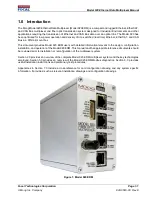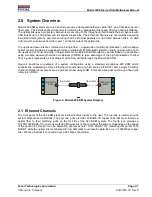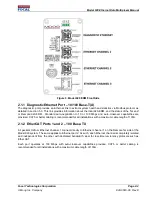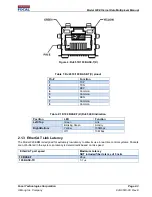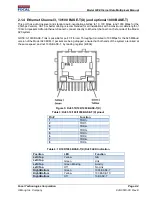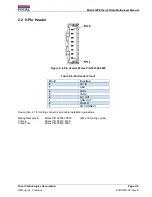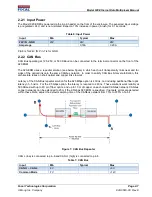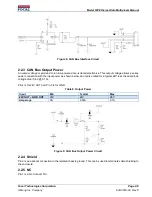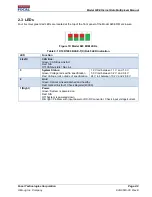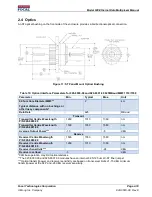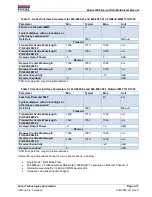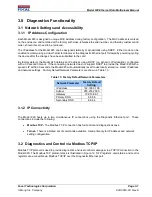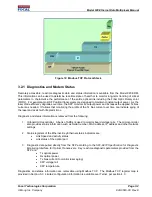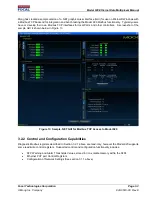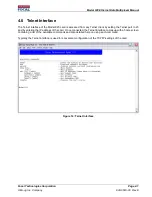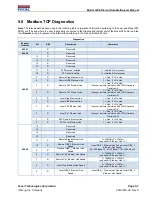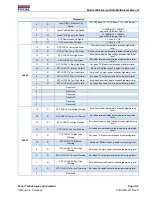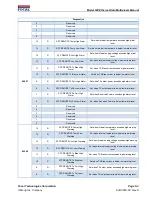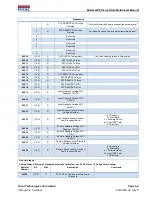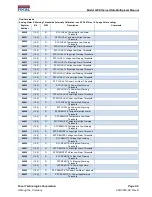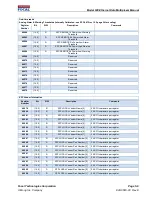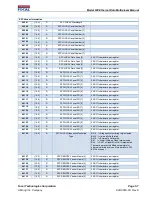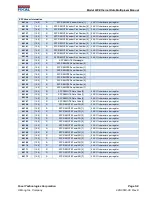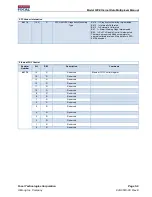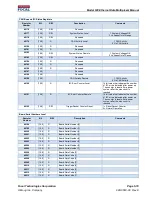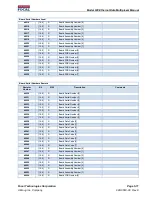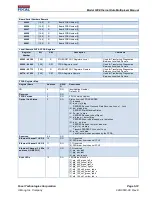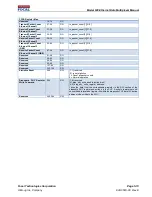
Model 920 Ethernet Data Multiplexer Manual
Focal Technologies Corporation
Page 3-2
A Moog Inc. Company
920-0603-00 Rev K
Figure 12: Modbus TCP Protocol Stack
3.2.1 Diagnostics and Modem Status
Remotely accessible, real-time diagnostic data and status information is available from the Model 920 EDM.
This information can be used to determine real-time state of health or to monitor long-term trending of critical
parameters to characterize the performance of the entire optical link including the Fiber Optic Rotary Joint
(FORJ). For example, most SFP optical transceivers are designed to maintain constant output power. As the
laser diode efficiency degrades over time, the SFP monitors its output power and increases the applied Tx bias
current as needed. It follows that monitoring the profile of the Tx bias current over time can indicate aging of
the laser and assist with life predictions.
Diagnostic and status information is retrieved from the following:
1. Onboard microcontroller. A bank of ADCs is used to monitor board voltage rails. The microcontroller
also provides status information such as Serial number, MAC address, IP address and other Network
settings
2. Status registers of the Ethernet. Key Ethernet status indicators are:
Link Speed and activity status
Link status of the optical port
3. Diagnostic data pulled directly from the SFP according to the
SFF-8472 Specification for Diagnostic
Monitoring Interface for Optical Transceivers.
Key real-time diagnostic parameters provided from the
SFP are:
Tx optical power
Rx optical power
Tx bias current (to monitor laser aging)
SFP voltage rail
SFP temperature
Diagnostics and status information are retrievable using Modbus TCP. The Modbus TCP register map is
provided in Section 5.0. Limited configuration information is available over Telnet, per section 4.0.

